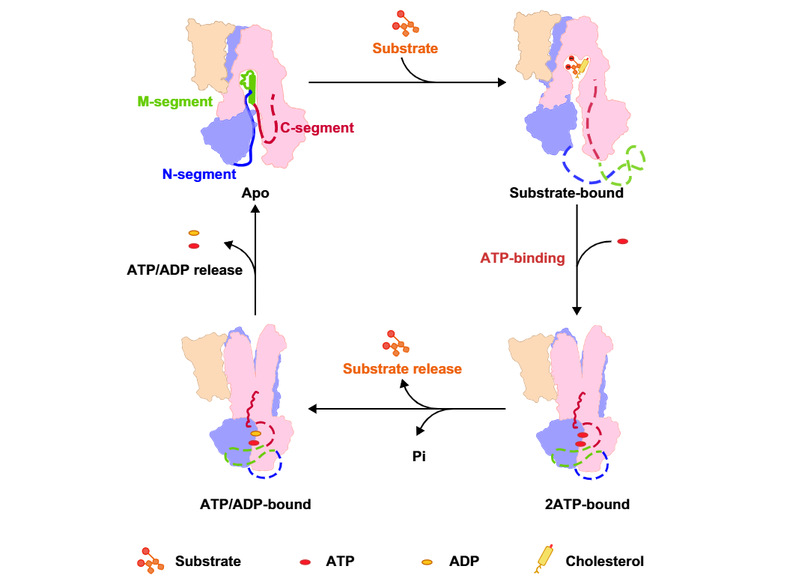USTC Reveals Molecular Mechanism of Transmembrane Bilirubin Transport by Human ABCC2 Transporter
The metabolic process of bilirubin has been a focus of attention since its abnormal accumulation has been associated with a variety of diseases. Bilirubin is a substance produced by the breakdown of aging or damaged red blood cells, and its effective removal is essential for human health.
A research team led by Prof. CHEN Yuxing and Prof. ZHOU Congzhao from University of Science and Technology of China (USTC) of Chinese Academy of Sciences has successfully revealed the three-dimensional structure and working mechanism of the human bilirubin transporter ABCC2. The study was published in Nature Communications.
The researchers analyzed the structure of the ABCC2 protein determined by single-particle cryogenic electron microscopy (cryo-EM) in three different forms: the apo-form, the substrate-bound form and the ATP/ADP-bound structures. They proposed a unique regulatory domain (R domain) that precisely controls ABCC2 substrate recognition and transport.
The R domain folded into a hairpin structure that helped the ABCC2 protein stay still before it encountered bilirubin. But when it bound to a physiological substrate analogue, bilirubin ditaurate (BDT), the hairpin part moved away. Besides,R domain helped proteins select high-affinity conjugated bilirubin for preferential outward transport. The protein then changed its conformation in response to the hydrolysis of ATP, releasing the substrate into the duct.
In particular, the researchers pointed to a specific ABCC2 mutant (R1150H) that weakens the function of the R domain and leads to decreased transport activity, which explained the molecular mechanism of diseases such as Durbin-Johnson syndrome.

Mechanism model of R domain regulating ABCC2 substrate transport (Image by USTC)
This study identified the key role of ABCC2 protein in the treatment of bilirubin under the fine regulation of the R domain, providing a new perspective for understanding bilirubin metabolism and a possibility for targeted treatment of related genetic diseases.
paper link: https://rdcu.be/dxQOp
(Written by CHEN Yehong, edited by HUANG Rui, USTC News Center)
Back
